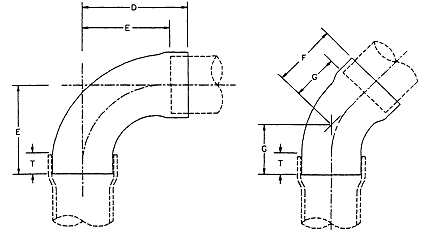A Type A compression contains an "olive" which compresses around a pipe when a nut is tightened. This makes a water tight joint. Theres a description and picture listed here on Wiki

Type B fittings have a flared end instead of an "olive" as shown below. This prevents the olive coming loose since it is incorporated into the pipe itself.

The morning session comprised of measuring and soldering different joints and cutting pipes to length to make a simple jig or simple circuit of joints. Essentailly it was 4 pipes of different bore and 4 elbows. This proved to be a run through for an assement that afternoon althought the afternoon session proved to be far more involved.
The small circuit was quite simple to construct and once complete it was pressure tested upto 5 atmospheres (5 bar).
The afternoon assessment consisted of a G shaped jig which was again constructed of 23 and 15mm pipe. The circuit contained the following fittings
1. 2X capillary lebows
2. 2X end feed elbows
3. 1X (15 by 15 by 23 mm) Tee
4. 1X type A (23 by 23 by 15mm) compression Tee
5. 1X Type B compression Tee
6. 2X tap end connectors.
These were all joined with copper pipe and again as in other assessments, the measurements needed to be within a 2mm tollerance.
One of the problems that became clear was that although it was possible to cut the pipes at the correct lenghts, the soldering process needed to be very precise as all the joints needed to be soldered so the jig stayed flat and that i didnt solder in twists into the pipework. I found that i had to resolder/remove a few joints due to this factor.
After a few joint changes and a bit of juggling i managed to get the jig square and the meaasurements accurate. It was measured by the tutor and then pressure tested to 5 bar.
I passed the assessment and then was told to read up on fire safety in my BTSC manual, which i would be later tested on.
